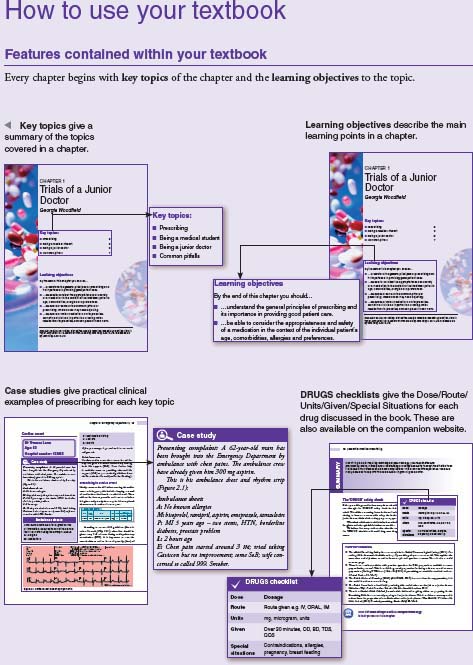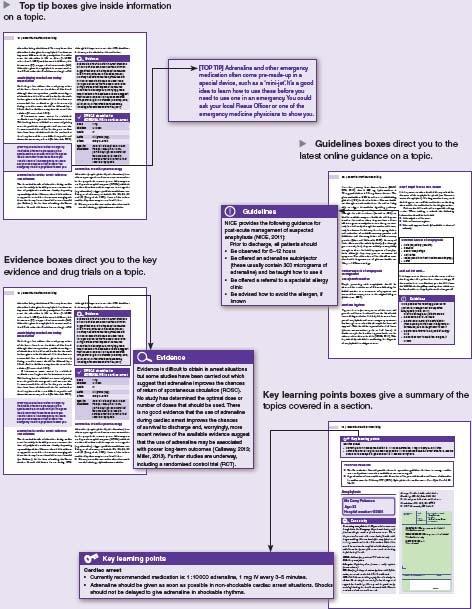


This edition first published 2016 © 2016 by John Wiley & Sons, Ltd
Registered office: John Wiley & Sons, Ltd, The Atrium, Southern Gate, Chichester, West Sussex, PO19 8SQ, UK
Editorial offices: 9600 Garsington Road, Oxford, OX4 2DQ, UK
The Atrium, Southern Gate, Chichester, West Sussex, PO19 8SQ, UK
111 River Street, Hoboken, NJ 07030-5774, USA
For details of our global editorial offices, for customer services and for information about how to apply for permission to reuse the copyright material in this book please see our website at www.wiley.com/wiley-blackwell
The right of the authors to be identified as the authors of this work has been asserted in accordance with the UK Copyright, Designs and Patents Act 1988.
All rights reserved. No part of this publication may be reproduced, stored in a retrieval system, or transmitted, in any form or by any means, electronic, mechanical, photocopying, recording or otherwise, except as permitted by the UK Copyright, Designs and Patents Act 1988, without the prior permission of the publisher.
Designations used by companies to distinguish their products are often claimed as trademarks. All brand names and product names used in this book are trade names, service marks, trademarks or registered trademarks of their respective owners. The publisher is not associated with any product or vendor mentioned in this book. It is sold on the understanding that the publisher is not engaged in rendering professional services. If professional advice or other expert assistance is required, the services of a competent professional should be sought.
The contents of this work are intended to further general scientific research, understanding, and discussion only and are not intended and should not be relied upon as recommending or promoting a specific method, diagnosis, or treatment by health science practitioners for any particular patient. The publisher and the author make no representations or warranties with respect to the accuracy or completeness of the contents of this work and specifically disclaim all warranties, including without limitation any implied warranties of fitness for a particular purpose. In view of ongoing research, equipment modifications, changes in governmental regulations, and the constant flow of information relating to the use of medicines, equipment, and devices, the reader is urged to review and evaluate the information provided in the package insert or instructions for each medicine, equipment, or device for, among other things, any changes in the instructions or indication of usage and for added warnings and precautions. Readers should consult with a specialist where appropriate. The fact that an organization or Website is referred to in this work as a citation and/or a potential source of further information does not mean that the author or the publisher endorses the information the organization or Website may provide or recommendations it may make. Further, readers should be aware that Internet Websites listed in this work may have changed or disappeared between when this work was written and when it is read. No warranty may be created or extended by any promotional statements for this work. Neither the publisher nor the author shall be liable for any damages arising herefrom.
Library of Congress Cataloging-in-Publication Data
Names: Woodfield, Georgia, author. | Phillips, Benedict Lyle, author. |
Taylor, Victoria, MBChB, author. | Hawkins, Amy, MBChB, author. | Stanton,
Andrew, MD, author. | O'Sullivan, Marie, active 2015, contributor.
Title: Essential practical prescribing / Georgia Woodfield, Benedict Lyle
Phillips, Victoria Taylor, Amy Hawkins, Andrew Stanton ; with contribution from Marie O'Sullivan.
Description: Chichester, West Sussex ; Hoboken, NJ : John Wiley & Sons, Inc.,
2016. | Includes bibliographical references and index.
Identifiers: LCCN 2015046044 (print) | LCCN 2015048186 (ebook) |
ISBN 9781118837733 (pbk.) | ISBN 9781118837702 (pdf) | ISBN 9781118837696 (epub)
Subjects: | MESH: Drug Prescriptions
Classification: LCC RM139 (print) | LCC RM139 (ebook) | NLM QV 748 | DDC
615.1/4-dc23
LC record available at http://lccn.loc.gov/2015046044
A catalogue record for this book is available from the British Library.
Wiley also publishes its books in a variety of electronic formats. Some content that appears in print may not be available in electronic books.
This textbook was inspired by the need for a practical prescribing textbook for medical students and junior doctors. In a 2009 General Medical Council (GMC) report, 9% of hospital prescriptions contained errors, where 18.7% of these were made by junior doctors (Dornan et al., 2009). A 2008 GMC report of newly qualified UK doctors showed that prescribing was the ‘main area of practice in which errors were reported by respondents, indicating a significant potential risk’ (Illing et al., 2008). Aside from these figures, the initial inspiration for the book came from my own and others' personal experiences of being a doctor training in busy UK hospitals. Starting as a doctor is daunting, particularly due to the sudden weight of responsibility, much of which lies in prescribing medications. A National Patient Safety Agency study in 2007 found that 32% of the most serious UK drug error incidents were caused by prescribing (NPSA, 2009). When I (GW) started I would have certainly found a practical prescribing book beneficial, as common prescriptions do not become embedded in your memory until you have had the experience to draw back on.
Later on, whilst teaching medical students in the Great Western Hospital Swindon, it became clear that many were worried about becoming junior doctors, where prescribing was a major theme. I and the co-authors (working as clinical teaching fellows or with regular teaching roles) therefore ran prescribing tutorials for medical students, and received hugely positive feedback from them. This encouraged us to publish the data from the tutorials, present at conferences and ultimately write this textbook.
We believe our textbook fills a gap in a critical subject area by relating to medical students and junior doctors in a practical and accessible way. We have tried to ensure this by basing it on our own experiences as junior doctors. It is concise enough to be used as a ward guide, particularly as the DRUGS Checklists provide a quick summary of how to write prescriptions. The book also contains MCQs on a companion website (see the link at the end of each chapter) for those revising for the Prescribing Skills Assessment or wanting to test their knowledge. The website also has easily accessible DRUGS Checklist boxes, where important information is condensed for ease of reference.
We hope this book helps you to avoid mistakes, learn tips from doctors who have gone before you and be the best doctor you can be. Good Luck!
Georgia Woodfield
Benedict Lyle Phillips
Victoria Taylor
Amy Hawkins
Andrew Stanton
Dornan T, Ashcroft D, Heathfield H et al. (2009). Final report. An in Depth Investigation into Causes of Prescribing Errors by Foundation Trainees in Relation to their Medical Education. Equip Study. Available at: www.gmc-uk.org/FINAL_Report_prevalence_and_causes_of_prescribing_errors.pdf_28935150.pdf (accessed Dec. 2015).
Illing J, Morrow G, Kergon C et al. (2008). How Prepared are Medical Graduates to Begin Practice? A Comparison of Three Diverse UK Medical Schools. Available at: www.gmc-uk.org/FINAL_How_prepared_are_medical_graduates_to_begin_practice_September_08.pdf_29697834.pdf (accessed Dec. 2015).
NHS National Patient Safety Agency (NPSA) (2009). National Reporting and Learning Service. Safety in Doses Improving the Use of Medicines in the NHS. Learning from National Reporting 2007. Available at: www.nrls.npsa.nhs.uk/resources/?entryid45=61625 (accessed Dec. 2015).
We are most grateful to a number of our colleagues from the Great Western Hospital, the University of Bristol and London for their time and expertise in reviewing and providing valuable comments and suggestions to improve sections of the book.
Chapter 2 Emergency Department: Dr Clare Taylor, Emergency Medicine Consultant at the Royal United Hospitals, Bath
Chapter 3 Cardiology: Dr Andrianos Kontogeorgis, Senior Clinical Fellow in Cardiology and Electrophysiology at the Royal Brompton Hospital, London
Chapter 5 Gastroenterology: Dr Ajeya Shetty, Gastroenterology Consultant at the Great Western Hospital, Swindon
Chapter 6 Neurology: Dr Stephan Hinze, Neurology Consultant at the Great Western Hospital, Swindon
Chapter 7 Surgery: Dr Tony Pickworth, Consultant Anaesthetist at the Great Western Hospital Swindon
Chapter 8 Care of the Elderly: Dr Sameer Maini, Care of the Elderly Consultant at the Great Western Hospital, Swindon
Chapter 9 Anticipatory Prescribing at the End of Life: Professor Karen Forbes, Palliative Medicine Consultant at the University Hospitals, Bristol
Chapter 10 Renal: Dr Gavin Dreyer, Specialist Registrar in Nephrology in the NE London Deanery, Dr Rhys Evans, Specialist Registrar in Nephrology in the NE London Deanery and Dr Ulla Hemmilä, Specialist Registrar in Nephrology in the NE London Deanery
Chapter 11 Microbiology: Dr Robert Baker, Microbiology Consultant at the Musgrove Park Hospital, Taunton
Chapter 12 Rheumatology: Dr Lyn Williamson, Rheumatology Consultant at the Great Western Hospital, Swindon
Chapter 13 Dermatology: Dr Sam Gibbs, Dermatology Consultant at the Great Western Hospital, Swindon
Chapter 14 Obstetrics and Gynaecology: Mr Kevin Jones, Obstetrics and Gynaecology Consultant at the Great Western Hospital, Swindon
Chapter 15 Diabetes: Professor Andy Levy, Consultant Endocrinologist, University Hospitals, Bristol
Thank you also to Dr Stanton for believing in us and supporting us every step of the way.


Don't forget to visit the companion website for this book:

www.wileyessential.com/prescribing
There you will find valuable material designed to enhance your learning, including:
Scan this QR code to visit the companion website
